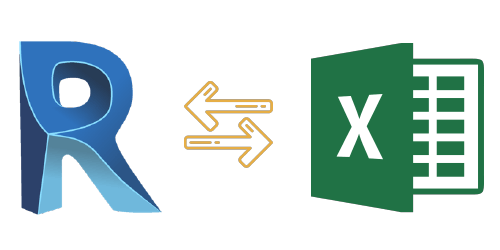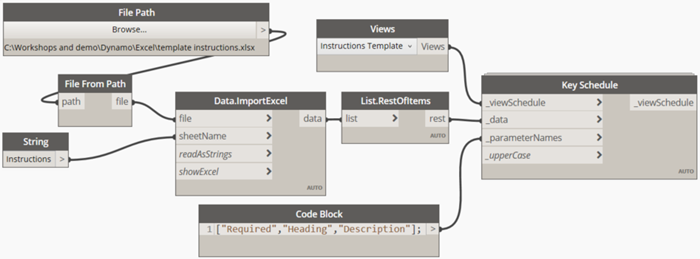Revit Add Ins: Expanding Your Layout Abilities
Wiki Article
Damaging Obstacles: Excel Importation Techniques for Advanced Revit Users
Are you an advanced Revit customer wanting to take your skills to the next level? In this short article, we will reveal you how to break barriers by leveraging Excel for importation in Revit. Check out different data importation methods and master Excel combination to boost your Revit modeling abilities. With our techniques and pointers, you can overcome importation obstacles and come to be a true specialist in using Excel for your Revit projects. Prepare yourself to succeed in your Revit journey!Advanced Revit Users: Leveraging Excel for Importation
You can conveniently take advantage of Excel for importation as an innovative Revit individual. Excel is a powerful device that can considerably improve your workflow and performance in Revit. With its capability to take care of huge quantities of data and do intricate calculations, Excel can be a beneficial property in managing and arranging your task information.One way to take advantage of Excel for importation is by using the "Link Excel" feature in Revit. This feature allows you to connect an Excel spreadsheet directly into your Revit task, enabling you to upgrade and integrate data between the two programs. When dealing with routines or tracking changes in your task., this can be particularly valuable.
An additional means to use Excel is by utilizing the "Import/Export" feature in Revit. This attribute allows you to import and export data in between Revit and Excel, providing you the flexibility to collaborate with data in both programs. You can import information from Excel right into Revit to develop components such as wall surfaces, doors, or areas, and you can likewise export information from Revit to Excel for more evaluation or reporting.

Exploring Information Importation Approaches in Revit Utilizing Excel
Exploring how to import information from Excel right into Revit uses effective approaches for integrating information. When you import information from Excel, you can effortlessly move data such as room routines, product checklists, and tools information right into your Revit project. This procedure allows you to conserve effort and time by avoiding manual data entry.To import information from Excel into Revit, you can use the "Import/Export" function. This feature allows you to map the Excel information areas to the corresponding Revit criteria, ensuring that the information is properly designated within the model. By picking the proper import alternatives, you can manage how the data is imported and how it communicates with your job.
Another approach for importing information from Excel into Revit is by utilizing Eager beaver. Dynamo is a visual programs device that integrates with Revit and permits you to automate tasks and workflows. With Eager beaver, you can produce customized scripts that import data from Excel and control it within your Revit project. This technique offers much more flexibility and modification choices.
Mastering Excel Integration for Advanced Revit Modeling
Grasping Excel integration for sophisticated Revit modeling entails using effective methods to seamlessly move data and automate jobs within your job. By using the power of Excel, you can boost your Revit modeling workflow and save important time. One crucial method is importing information from Excel spreadsheets straight right into your Revit model. This enables you to occupy specifications, such as room names or material amounts, effortlessly. With a few straightforward steps, you can map the Excel columns to the equivalent Revit parameters and import the data properly.One more valuable approach is exporting data from Revit to Excel. This enables you to draw out info from your version, such as routines or material amounts, and assess it in Excel making use of solutions, charts, or various other effective devices. By leveraging the abilities of Excel, you can carry out complicated computations, create customized reports, and gain valuable insights into your task.
In addition to information transfer, Excel integration can automate repetitive jobs in Revit. By producing macros or scripts in Excel, you can automate processes like producing sights, producing sheets, or applying conventional family members - import excel into revit. This not just saves time but likewise makes certain uniformity throughout your project
To grasp Excel assimilation in Revit, it is crucial to understand the information framework and just how Revit engages with Excel. By familiarizing yourself with the readily available tools and techniques, you can open the complete potential of Excel combination and take your Revit more information modeling to the next level.
Overcoming Importation Obstacles: Excel Techniques for Revit Professionals
When getting rid of importation challenges, it's crucial to be acquainted with reliable Excel strategies that can profit specialists in Revit. As an advanced Revit individual, you understand the value of seamlessly importing information from Excel right into your jobs. Nevertheless, you might run into various challenges along the means. By making use of effective Excel techniques, you can get over these difficulties and improve your productivity.
Another beneficial strategy is making use of the "Transpose" feature in Excel. This permits you to convert information from rows to columns or the other way around. When importing data into Revit, this can be particularly useful when you have data in a vertical format in Excel, yet you require it look at this now to be in a straight layout in Revit.
Furthermore, making use of Excel solutions such as VLOOKUP and INDEX-MATCH can considerably aid in mapping data from Excel to Revit. These solutions permit you to search for specific worths in Excel and fetch equivalent data from one more column. When importing huge datasets into Revit., this can save you time and initiative.
Excel Data Importation Advice for Advanced Revit Users
By familiarizing yourself with effective Excel pointers and techniques, you can boost your data importation process as a sophisticated user of Revit. Excel is an effective device that can greatly assist in the importation of data right into Revit, conserving you time and boosting your performance. One useful suggestion is to utilize the "Text to Columns" attribute in Excel to separate data into various columns based on a delimiter. This can be particularly valuable when you have data in a solitary column that requires to be split right into several columns in Revit. Furthermore, utilizing Excel's "Paste Unique" attribute permits you to paste data from Excel into Revit while maintaining format, such as cell shade or font style. When importing information that calls for particular format in Revit, this can be specifically beneficial. Another helpful trick is to use Excel's "Find and Change" feature to rapidly make modifications to your data prior to importing it right into Revit. You can conveniently replace certain message or personalities with others, conserving you the time and initiative of manually modifying the data in Revit. By utilizing these Excel tricks and suggestions, you can enhance your data importation procedure and end up being a lot more skilled in using Revit. go to these guys
Final Thought
You have now found out valuable techniques for importing information from Excel right into Revit as an advanced user. Go ahead, damage those obstacles and excel in your Revit projects!
When importing information right into Revit, this can be especially handy when you have information in an upright format in Excel, yet you need it to be in a straight style in Revit.
Moreover, using Excel formulas such as VLOOKUP and INDEX-MATCH can significantly assist in mapping data from Excel to Revit. In addition, utilizing Excel's "Paste Special" attribute permits you to paste data from Excel right into Revit while keeping format, such as cell shade or font style.
Report this wiki page